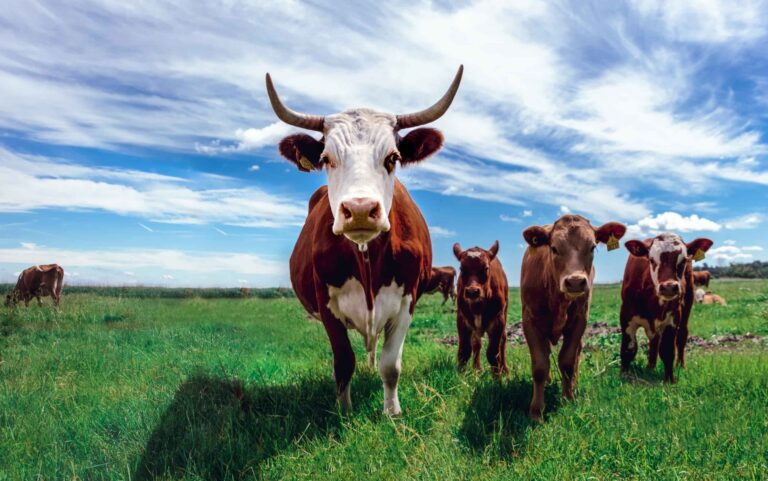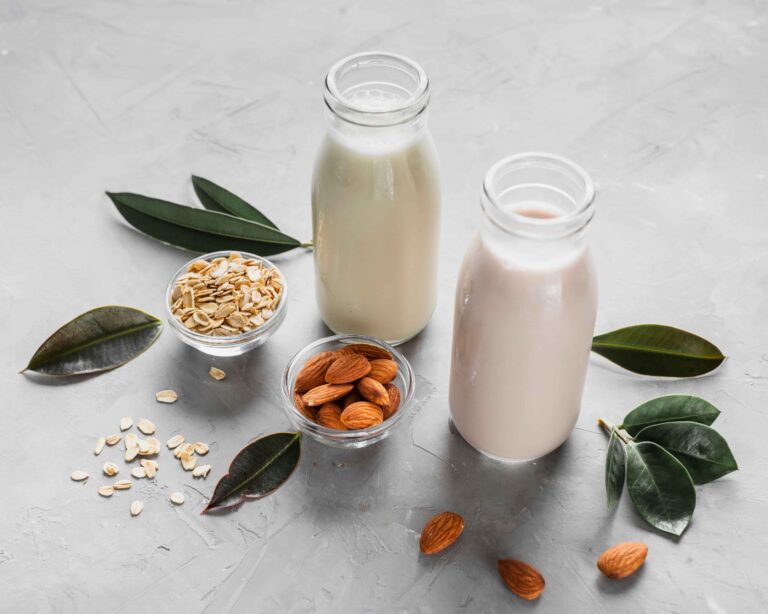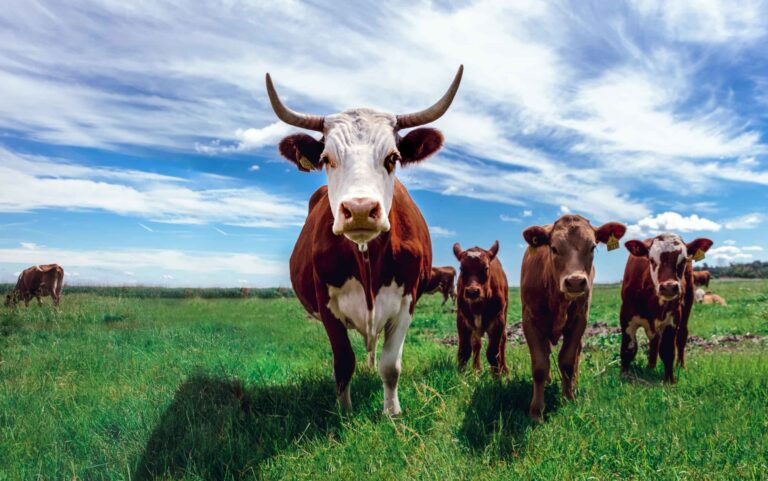What exactly are the issues with the industry?
According to a UN report on emissions in the dairy sector, the production of one liter of milk releases an average of 2.4 kilograms of CO2 worldwide. To illustrate this number, it is often compared to the combustion of a liter of gasoline. This does not yet include the subsequent processing that occurs, for example, during storage, heating or cooling, and transport of the milk. But what exactly makes milk production so harmful to the environment?

Effects on the environment and their causes
Perhaps some remember the typical cartoon images in elementary school science books depicting farting cows as a major cause of the dwindling ozone layer.
The statement is not entirely false: cows emit methane gas, which is ten to twenty times more harmful to the climate than CO2. However, this was not really a problem in times before factory farming: a cow offsets the negative effects of its gas emissions by stimulating the grass on its pasture to grow, which in turn has a positive environmental impact by binding CO2. But this equation no longer works when cows are kept in mass farms and only get to see a pasture in their wildest dreams.
Instead of fresh grass, barn cows are given feed made from soy or other grains. This practice brings many other problems in addition to the lack of environmental compensation of the cow described above: feeding with soy fodder results in massive overfertilization of the soil due to a different composition of the manure that results, which in turn brings negative environmental consequences due to the release of nitrogen. In the case of feeding with other cereals, one must consider that the cultivated areas could theoretically be used instead for the production of cereals for human consumption (and in some cases would be urgently needed for this purpose).
Not to be neglected in this context, of course, is the health impact on the dairy cows themselves: In a Quarks article, the enormous physical strain on the animals caused by the artificially inflated milk yield is equated with a human running a marathon three times a day. Added to this are the health effects of miserable conditions in mass farming.

Effects of different living conditions
Not only for the cows themselves, but also for the environment, more animal-friendly forms of husandry are preferred: A study commissioned by the Federal Environment Agency concluded that pasture husbandry has a better environmental balance than indoor husbandry and – perhaps unsurprisingly – ecologically oriented farms also contribute less to environmental pollution than conventional ones. The cause lies essentially in feed production, which, according to the study, makes the greatest contribution to the negative climate impact on conventional dairy farms (see above).
Plant-based milk alternatives
In addition to the necessary improvement of conditions in the dairy industry itself, a reduction in consumption would of course also benefit the environment.
Here consumers have a choice, because at this point all supermarkets offer various alternatives to cow’s milk: Oat milk, almond milk, soy milk, and so on. TeamClimate compares the various alternatives in terms of CO2 emissions, land use and water consumption during production. The result: all alternatives are less harmful to the environment than cow’s milk, although there are certain pitfalls even with plant-based substitutes: while the popular almond milk provides the least CO2 emissions, it is in second place directly behind cow’s milk in terms of water consumption. That’s why TeamClimate’s recommendation is: Oat milk.

…but isn’t cow milk healthier?
At least, that’s what many of us learned in childhood: we remember the daily milk from school that was supposed to be a nutritious recess snack, or our favorite stars with funny milk mustaches in the American dairy industry’s Got Milk? advertising campaign in the early 2000s. But in fact, the health benefits are not as great as we remember. The Correctiv explains the connections and backgrounds of the similar marketing measures employed by the German milk lobby and states after analysis of the current situation: The health benefits of cow milk consumption, for example because of the calcium it contains, are scientifically not at all clear, and at least somewhat disputed.
Conclusion
As always, there is not only one cause and therefore not only a single solution. Just as with other environmental issues, this is a matter for politicians, who can intervene in the industry’s framework conditions in a regulatory or promotional way, as well as for the players in the dairy industry itself – and finally, we as consumers can also exert influence by sending signals with our purchasing decisions and increasing the demand for more environmentally friendly alternatives.



